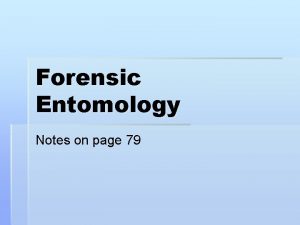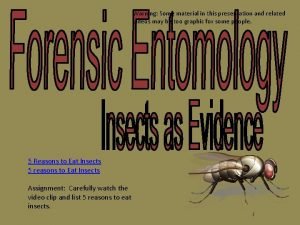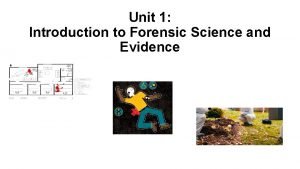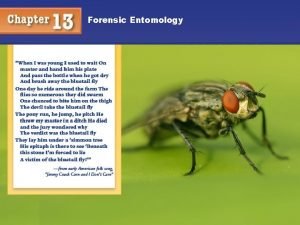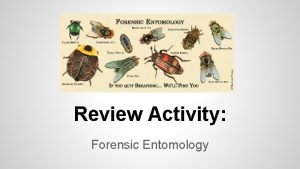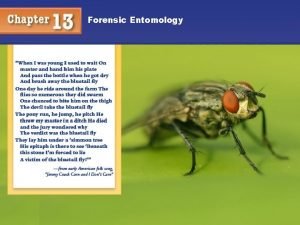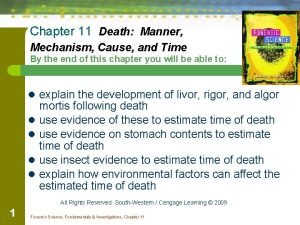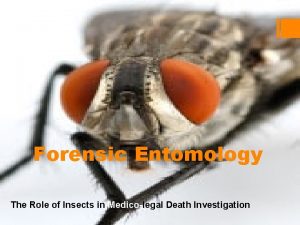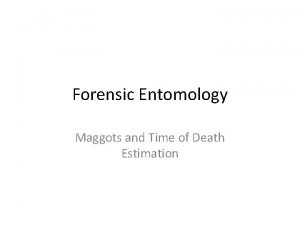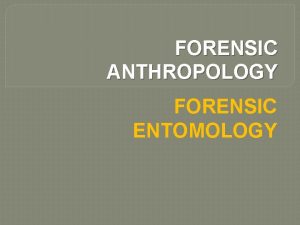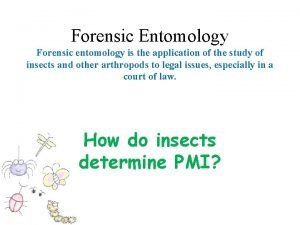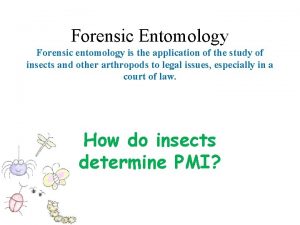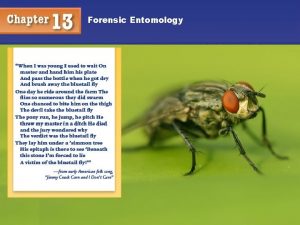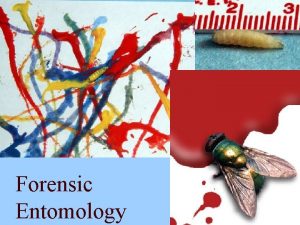Forensic Entomology Notes on page 79 What is










- Slides: 10

Forensic Entomology Notes on page 79

What is Forensic Entomology? § Applying the study of insect life cycle to estimating time of death § Flies and beetles follow a life cycle that allow scientists to estimate how long a body has been deceased

Life Cycle of the Fly 21 -24 days 8 -12 days Soon after death 4 -5 days 1. 8 days 2. 5 days

The egg § Shortly after death, a mature fly will lay eggs on the decomposing flesh § Will typically lay eggs in moist, warm areas § Mouth, eyes, ears, anus, wounds § Will remain 8 hours § Approximately 2 mm in length

Larval stages § § § Also called instar 1, 2 and 3 Have black mouth hooks Will have spiracle slits near anus § Instar 1: 1 spiracle slit; 5 mm in length § Instar 2: 2 spiracle slits; 10 mm in length § Instar 3: 3 spiracle slits; 17 mm in length § Crop visible in 2 nd instar stage; covered by fat deposits in 3 rd instar stage

Maggots

Pupa stages § After 3 rd instar maggots have matured, they will crawl away from body to a dry area § Become immobile, do not eat, changes to a dark brown color, pupa case is hard § Can stay in pupa cases for 10 -16 days

Adult flies § Adult fly matures in approximately 21 -24 days § They will be alive for several weeks § Not able to fly in first couple of hours

Beetles § Beetle larva differ from maggots in that they have 3 pairs of legs § Arrive on body after flies lay eggs § Come to feed on the maggots

Question § Answer this question on page 78 § Explain how flies and maggots are used to help estimate the time since death of a decomposing body
 Forensic entomology notes
Forensic entomology notes Crime solving insects lab answer key
Crime solving insects lab answer key Bobby poole and ronald cotton
Bobby poole and ronald cotton 2.06 forensic entomology
2.06 forensic entomology What does pmi stand for forensic entomology
What does pmi stand for forensic entomology Unit 6 activity forensic science
Unit 6 activity forensic science Forensic entomology examples
Forensic entomology examples What is
What is Chapter 11 forensic entomology
Chapter 11 forensic entomology Medicolegal forensic entomology
Medicolegal forensic entomology How to calculate adh forensics
How to calculate adh forensics
